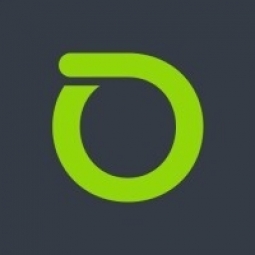公司规模
Large Corporate
地区
- America
- Asia
- Europe
- Middle East
国家
- Other
- United States
产品
- Arbor Edge Defense
- Hardware Security Module
技术栈
- SaaS
- Cloud Computing
实施规模
- Enterprise-wide Deployment
影响指标
- Cost Savings
- Customer Satisfaction
技术
- 网络安全和隐私 - 网络安全
- 基础设施即服务 (IaaS) - 云计算
适用行业
- 金融与保险
- 医疗保健和医院
- Software
适用功能
- 商业运营
用例
- 网络安全
服务
- 云规划/设计/实施服务
- 网络安全服务
关于客户
这家全球性组织是软件即服务 (SaaS) 解决方案的主要提供商,这些解决方案在云端运行,适用于银行、支付和交易文档以及其他领域。全球公司依靠它们提供应用解决方案,例如数字银行、基于云的金融信息传递、网络和风险管理以及许多其他服务。他们的客户从事金融服务、医疗保健、保险和其他高度注重安全的行业。该公司在全球拥有近十几个数据中心,并在北美、欧洲、亚洲和中东设有办事处,只有相对较少的 IT 员工为数千名客户提供基本业务服务。对于这家 SaaS 提供商来说,网络就是业务,因此任何对在线服务可用性的威胁都可能影响其客户的财务问题以及未来收入。
挑战
该组织面临的最大挑战是了解攻击业务的安全威胁。作为支付处理商和金融交易对帐提供商,及时完成请求至关重要。任何妨碍向客户提供这些服务的行为都会对客户和 SaaS 提供商造成经济损失,更不用说损害提供商的声誉了。尽管投资了 Web 应用程序防火墙 (WAF) 等安全工具,但 DDoS 攻击仍阻碍了对关键业务服务的访问近半天。在攻击持续期间,客户无法处理付款或对帐金融交易。即使没有发生实际违规,攻击造成的停机和声誉损害也会对业务产生重大的财务影响。更糟糕的是,安全团队使用的现有工具无法帮助他们检测或缓解攻击。他们需要一种既能提供可见性又能提供应对措施的新解决方案。
解决方案
为了更有效地保护其业务及其客户的业务,该组织转向了 NETSCOUT® 的 Arbor Edge Defense (AED)。这种无状态数据包处理引擎可充当网络边界执行点,检测和阻止入站网络威胁(例如 DDoS 攻击)和出站恶意通信。与仅保护 Web 应用程序的 WAF 不同,AED 保护所有入站和出站服务,提供最佳的 DDoS 保护和上下文威胁情报。从本质上讲,AED 为组织提供了第一道和最后一道边界防御线。部署 AED 彻底改变了游戏规则。突然之间,IT 团队能够看到并缓解他们之前视而不见的正在进行的容量和应用程序层 DDoS 攻击。他们能够检测僵尸网络和攻击流量,并阻止新的 DDoS 攻击。配置的简易性和对不同类型威胁的可见性使该组织能够快速实现价值。 AED 为 IT 团队提供了独特的网络流量视图,因为它可以通过 ATLAS 威胁情报源访问精心挑选的威胁数据库。凭借数百万个基于信誉的入侵指标 (IoC),AED 可以批量阻止入站 IoC,从而减轻状态安全设备(例如之前部署的 WAF)的压力。AED 还能够阻止从受感染的内部设备到互联网上已知不良站点的出站通信 - 本质上充当最后一道防线。每次阻止出站 IoC 时,AED 都可以提供更多与 IoC 相关的背景信息,从而帮助安全团队更好地确定风险并提供更多信息以供其他安全工具主动使用。
运营影响
数量效益

Case Study missing?
Start adding your own!
Register with your work email and create a new case study profile for your business.
相关案例.

Case Study
Hospital Inventory Management
The hospital supply chain team is responsible for ensuring that the right medical supplies are readily available to clinicians when and where needed, and to do so in the most efficient manner possible. However, many of the systems and processes in use at the cancer center for supply chain management were not best suited to support these goals. Barcoding technology, a commonly used method for inventory management of medical supplies, is labor intensive, time consuming, does not provide real-time visibility into inventory levels and can be prone to error. Consequently, the lack of accurate and real-time visibility into inventory levels across multiple supply rooms in multiple hospital facilities creates additional inefficiency in the system causing over-ordering, hoarding, and wasted supplies. Other sources of waste and cost were also identified as candidates for improvement. Existing systems and processes did not provide adequate security for high-cost inventory within the hospital, which was another driver of cost. A lack of visibility into expiration dates for supplies resulted in supplies being wasted due to past expiry dates. Storage of supplies was also a key consideration given the location of the cancer center’s facilities in a dense urban setting, where space is always at a premium. In order to address the challenges outlined above, the hospital sought a solution that would provide real-time inventory information with high levels of accuracy, reduce the level of manual effort required and enable data driven decision making to ensure that the right supplies were readily available to clinicians in the right location at the right time.

Case Study
Gas Pipeline Monitoring System for Hospitals
This system integrator focuses on providing centralized gas pipeline monitoring systems for hospitals. The service they provide makes it possible for hospitals to reduce both maintenance and labor costs. Since hospitals may not have an existing network suitable for this type of system, GPRS communication provides an easy and ready-to-use solution for remote, distributed monitoring systems System Requirements - GPRS communication - Seamless connection with SCADA software - Simple, front-end control capability - Expandable I/O channels - Combine AI, DI, and DO channels

Case Study
Driving Digital Transformations for Vitro Diagnostic Medical Devices
Diagnostic devices play a vital role in helping to improve healthcare delivery. In fact, an estimated 60 percent of the world’s medical decisions are made with support from in vitrodiagnostics (IVD) solutions, such as those provided by Roche Diagnostics, an industry leader. As the demand for medical diagnostic services grows rapidly in hospitals and clinics across China, so does the market for IVD solutions. In addition, the typically high cost of these diagnostic devices means that comprehensive post-sales services are needed. Wanteed to improve three portions of thr IVD:1. Remotely monitor and manage IVD devices as fixed assets.2. Optimizing device availability with predictive maintenance.3. Recommending the best IVD solution for a customer’s needs.

Case Study
HaemoCloud Global Blood Management System
1) Deliver a connected digital product system to protect and increase the differentiated value of Haemonetics blood and plasma solutions. 2) Improve patient outcomes by increasing the efficiency of blood supply flows. 3) Navigate and satisfy a complex web of global regulatory compliance requirements. 4) Reduce costly and labor-intensive maintenance procedures.

Case Study
Cloud-based healthcare solution for Royal Philips
Royal Philips wanted to launch its cloud-based healthcare solution HealthSuite Digital Platform in China to deliver services to help cope with challenges related to urbanization and population growth. Philips wanted to achieve this goal by combining mobile, cloud computing and big data technologies. To bring this platform and product to market, Philips required cloud computing and local technical service capabilities in China, in addition to a flexible IT infrastructure that could handle user requests.








